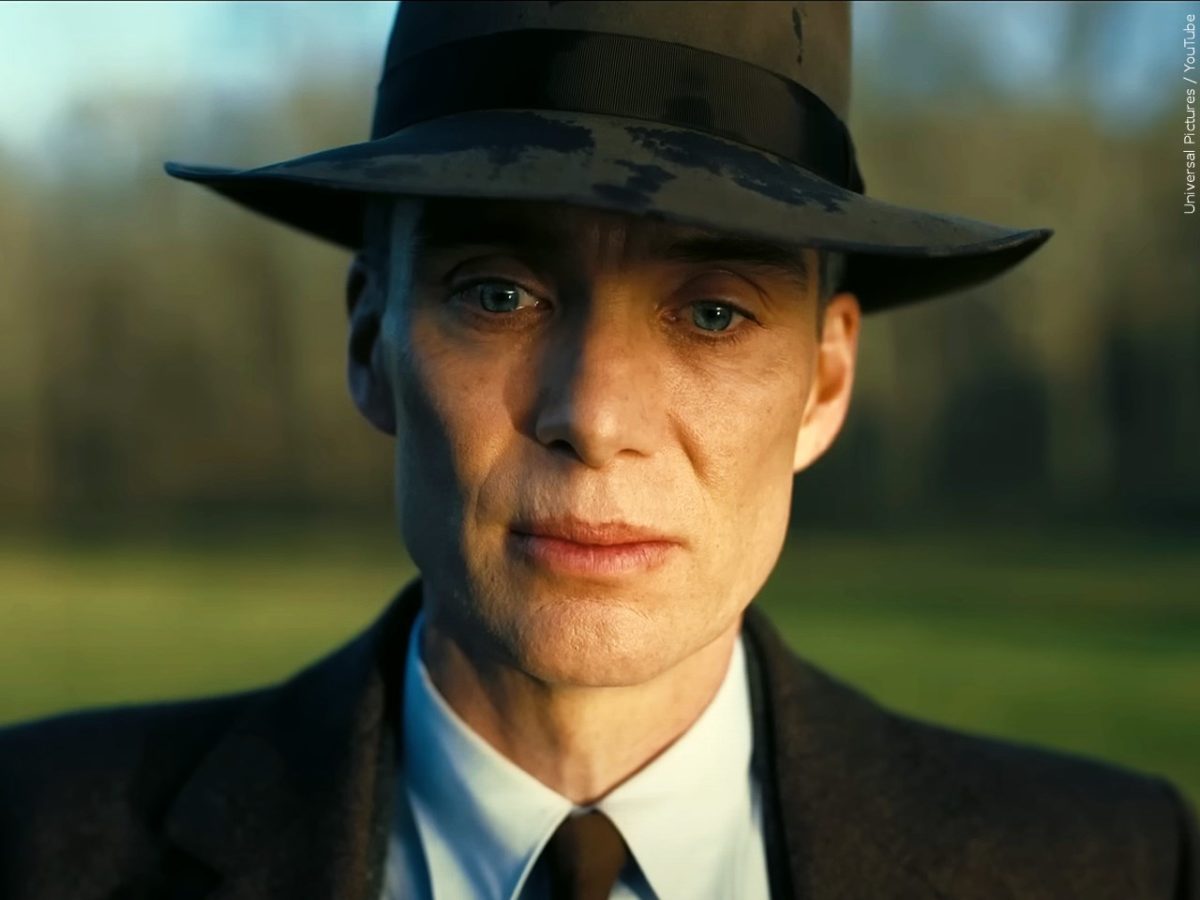Adapted from Pulitzer Prize-winning novel, “American Prometheus: The Triumph and Tragedy of J. Robert Oppenheimer,” Christopher Nolan’s “Oppenheimer” leaves its mark as one of the most ambitious films of the decade so far.
“Oppenheimer” follows the story of J. Robert Oppenheimer during the height of World War II and his creation of the atomic bomb. While a biopic and a film of this size is new territory for filmmaking auteur Christopher Nolan, his most recent venture in filmmaking still contains some of the hallmarks in his films.
In traditional Nolan fashion, this film finds itself jumping between three separate chapters of the Oppenheimer story. The first being the story of how Oppenheimer came to create The Manhattan Project. The second part of the story revolves around a post-WWII humiliating clearance hearing, and the final chapter follows a senate hearing that determines whether or not Lewis Strauss, played by Robert Downey Jr., should be appointed a federal government role.
Nolan’s approach to this film, like many others, creates a feeling that time isn’t always linear. Once again, we see Nolan’s obsession with men who seem to be conflicted, tormented, and riddled with anxiety. It comes as no surprise that Nolan would make a film about Oppenheimer.
It is worth noting that the characters in “Oppenheimer” are not the most likable batch of folk. This choice feels intentional in pushing forward the realism and nightmarish state of Los Alamos at the time. Oppenheimer is played hauntingly by Cillian Murphy, who creates a lead protagonist that feels like neither a hero nor villain. If anything, General Leslie Groves, portrayed by Matt Damon, is the closest thing this film has to a hero, and Lewis Strauss portrayed by Robert Downey Jr. fills up the villain role.
Murphy’s performance packs emotion despite being quiet and subdued. This is truly shown after Oppenheimer hears the news that his creation has been dropped on Hiroshima. Everything the audience needs to know about how Oppenheimer feels is portrayed through the look in Murphy’s eyes.
The editing for “Oppenheimer,” done by Jennifer Lame, who previously worked with Nolan on “Tenet,” keeps the film moving like a speeding train, and is another aspect of the film deserving praise.
For scenes comprised largely of people having conversations, the editing makes these conversations feel exciting. This also assists the film in jumping back and forth between the three main stories of “Oppenheimer.” Then, once the film finally arrives at the Trinity Test, the first trial detonation of the atomic bomb, the editing works in such a way that the film itself feels like it’s going to explode with anxiety and tension.
The execution of the Trinity Test within this film stands a towering achievement. The sound design, cinematography and anxious feeling of the entire sequence are all truly remarkable features, but an aspect of the scene that truly stands out is the characters. Everything you need to know about the ensemble cast is presented in this scene through how the characters prepare for the bomb and how they react once it has been dropped.
“Oppenheimer” tells the tale of a man who created something very dangerous and then paid the consequences for his actions on both a societal and personal level. The film presents a look at the United States when everything felt cynical and paranoid, a nation that cared more about a possible communist invasion than the potential dangers of a weapon of this size.
The film does not show the damage done or lives taken by the dropping of the two atomic bombs. This says something about turning a blind eye and ignoring the possible repercussions of one’s actions, whether that be personal or national. The infamous line, “Now I become death, the destroyer of worlds,” is uttered by a disturbed Oppenheimer in the film. It is presented as more than just a statement J. Robert Oppenheimer said about himself 80 years ago, but also as possibly something that could still apply to the world today.
















